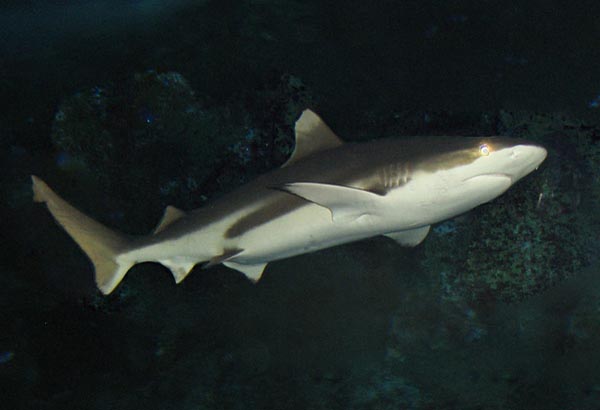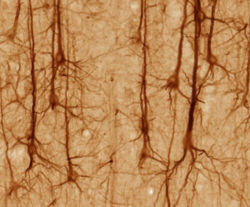|
The shark has "Ampullae of Lorenzini" which it uses to sense
electric fields, possibly of no more than 5nV/cm.

|
The picture below demonstrates how many neurons parallel each other, thereby providing scope for extensive interactions between nerve impulses, through their attendant electric fields. Here and here are more photos of parallelism in nerves.
This picture was selected because some type of parallel nerves likely are part of an important conscious area of the brain. Evolution of the shark has led to sensing the unavoidable electric fields put out by active muscles (left) in order to find live meat. Likewise, our evolution would not be expected to neglect using the unavoidable electric fields accompanying nerve impulses. The register of interactions between the electric fields would account for the massive amounts of data held within the consciousness existing in the visual cortex.
|
|
The shark senses very small forces acting against its own sensory electric fields, since muscle action produces fairly small voltages. Perhaps more importantly, a shallow gradient of the field allows for the shark's electrical sensing, although steep gradients would be much more sensitive.
By contrast, nerve impulses have smaller electric fields, yet have higher gradients with respect to nearby nerve impulses. With these higher gradients existing in what are often parallel circuits (see the next picture), the extensivity of consciousness, plus a useful interactivity within consciousness, appears to be explainable by electric forces intermingling between the neurons.
|

Parallel pyramidal neurons in the human cerebral cortex.
(copyright by BrainMaps.org)
|

